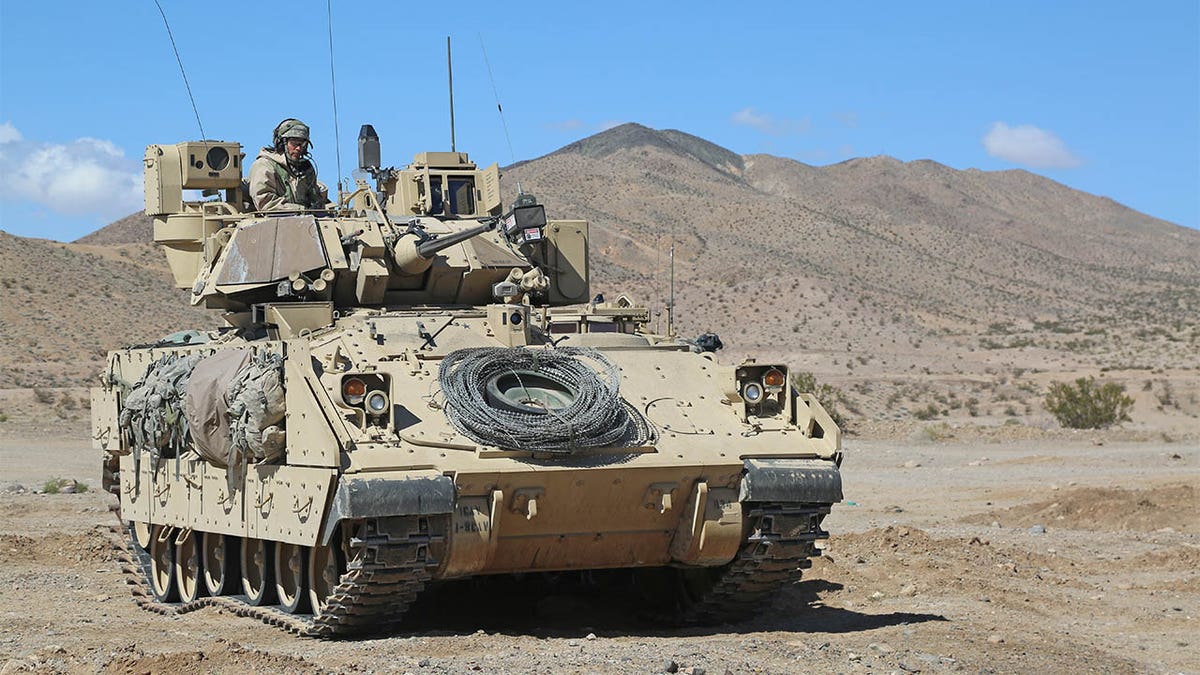Fox News Flash top headlines for October 15
Fox News Flash top headlines are here. Check out what's clicking on Foxnews.com.
What if an advancing Army armored unit were maneuvering through mountainous terrain to “close with an enemy” when it is suddenly hit and disabled by an incoming artillery attack ... because a small, hovering enemy drone finds its location and transmits an electronic signal back to an enemy firebase? With its location compromised, the unit is paralyzed by enemy fire and denied freedom of maneuver.
However, what if the armored unit is able to change its location and obscure itself from enemy fire when an EW (Electronic Warfare) detection system finds the electronic signature emitting from the enemy drone, deconflicts it from friendly electromagnetic emissions and then “jams” the data link connecting the drone to its operators, immediately disrupting the enemies’ ability to know the location, speed and direction of the attacking friendly force. Simply put, the maneuvering force can no longer be targeted by the enemy because the drone’s electronic sensors and transmission systems have been destroyed or rendered ineffective.
Or, how about if a reconnaissance unit of dismounted soldiers scouting through enemy territory encounters massive interference with its radio links to headquarters, due to EW attack. However, what if the attack is instantly thwarted by a multi-function, software-defined EW sensor that is able to find and track the hostile electronic signal and help facilitate the reallocation of communications frequencies for the recon unit, therefore enabling the continuation of secure communications? In order to “hop” from a jammed frequency to a clearer one, an operator or automated technical system would need a complete, integrated understanding of the spectrum and how its many variables intersect.
These kinds of solutions are increasingly becoming a tactical reality for Army soldiers by virtue of ongoing service efforts to synchronize computer systems with EW applications and engineer innovative kinds of EW software systems.
ARMY SECRETARY REVEALS THAT US HYPERSONIC MISSILE HIT WITHIN 6 INCHES OF ITS TARGET: REPORT
Raytheon weapons developers are working with the Army to maximize this growing cyber-electronic warfare synergy to upgrade an EW application intended to help distinguish, analyze, emit, compare and disseminate time-sensitive, combat-crucial electromagnetic signatures in combat.
Engineers from Raytheon are now preparing a new “Capability Drop 4” software drop for its Electronic Warfare Planning and Management Tool (EWPMT), an EW-capable, software-driven multi-functional computer system built to find, track and analyze the increasingly complex and lethal electromagnetic spectrum in war.

U.S. Army Soldiers from Bravo Company, 1st Battalion, 8th Cavalry Regiment, 2nd Brigade Combat Team, 1st Cavalry Division, provide security around a local town during Decisive Action Rotation 15-05 at the National Training Center in Fort Irwin, Calif., March 3, 2015. Decisive Action Rotations are geared toward an adaptive enemy in a complex environment. (U.S. Army photo by Sgt. Charles Probst/Released)
Drawing from advanced algorithms, EWPMT software is intended for precisely these kinds of aforementioned scenarios and offers an irreplaceable type of on-the-spot analysis to soldiers operating within a forward-positioned Tactical Operation Center (TOC).
“EWPMT is designed to synchronize and assess all of the cyber electromagnetic activity in the TOC to allow the Commander to make informed decisions regarding things that are going into the spectrum,” Jeffrey Polhamus, Product Line Lead, Multi-Domain Battle Management, Raytheon Intelligence and Space, told Warrior in an interview.
COAST GUARD HONORS FLORIDA BOY, 11, IN GRANDPARENTS' RESCUE AT SEA
EWPMT can help identify and deconflict friendly emissions as well as enemy signals simultaneously to sift through and analyze a crowded and complex electromagnetic spectrum with friendly force, civilian and adversarial components.
“We are a software system and not a jammer or receiver, but we integrate with all of those things to support the breadth of all the EW types of systems and the waveforms they may need to produce,” Polhamus said.
CLICK HERE TO GET THE FOX NEWS APP
AI-enabled, multi-frequency EW systems, such as those brought to life with EWPMT, could operate from armored platforms, tactical vehicles, or forward-moving small drones to not only extend the sphere of a ground unit’s sensor reach but also identify, organize and deconflict what could be high-threat, complicated and congested electromagnetic spectrum. Perhaps an EWPMT system, engineered with the requisite algorithms and information analysis tools, could identify enemy radio communications or electronic radar systems on the other side of a mountain, providing ground commanders with a decided advantage. By using AI, perhaps EWPMT could take this even a step further, and draw upon an ability to perform real-time analytics on a wide scope of variables to include frequency, range, terrain and enemy threat data to recommend an optimal course of action for the commander in a particular circumstance?
-- Kris Osborn is the Managing Editor of Warrior Maven and The Defense Editor of The National Interest --





















